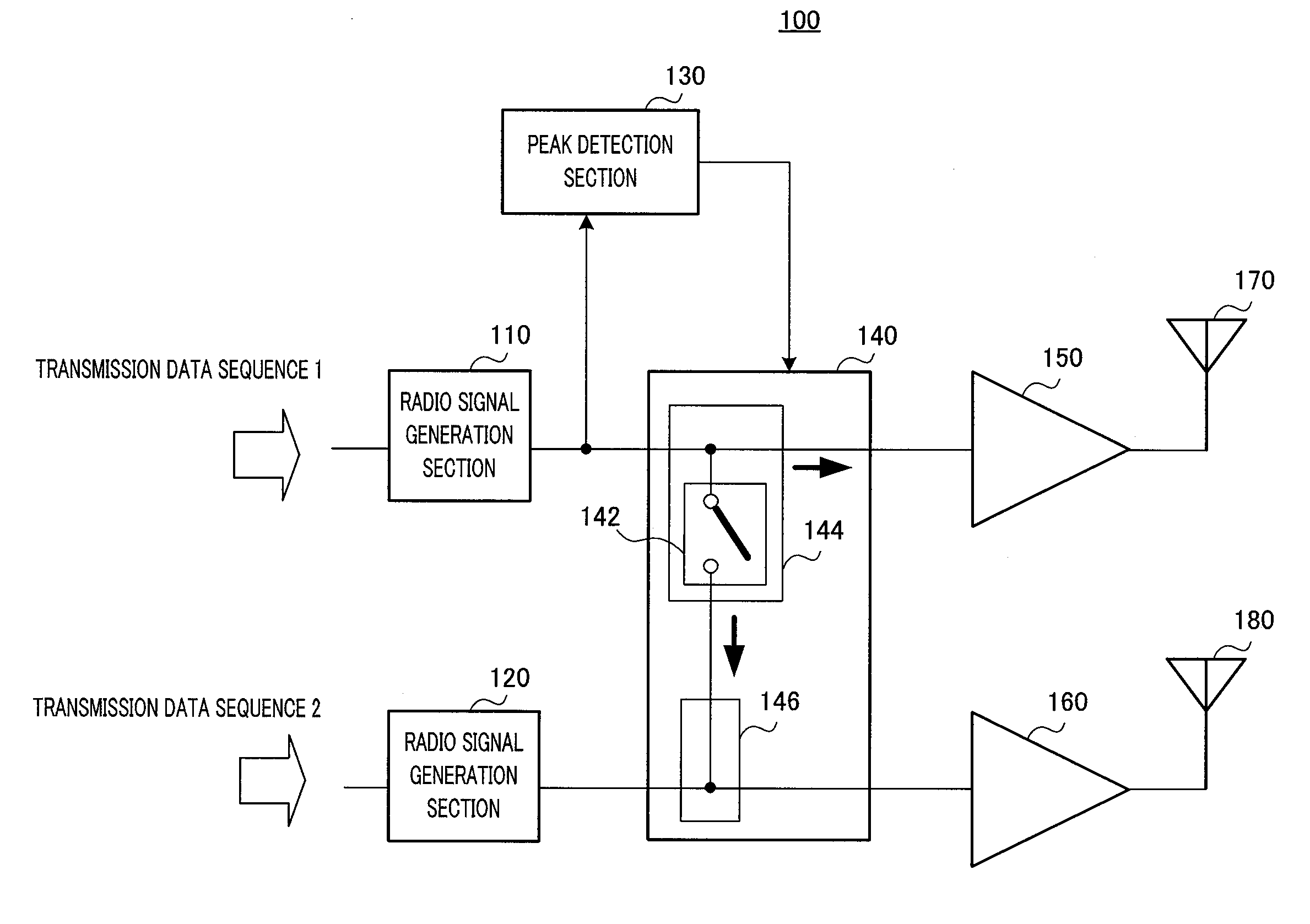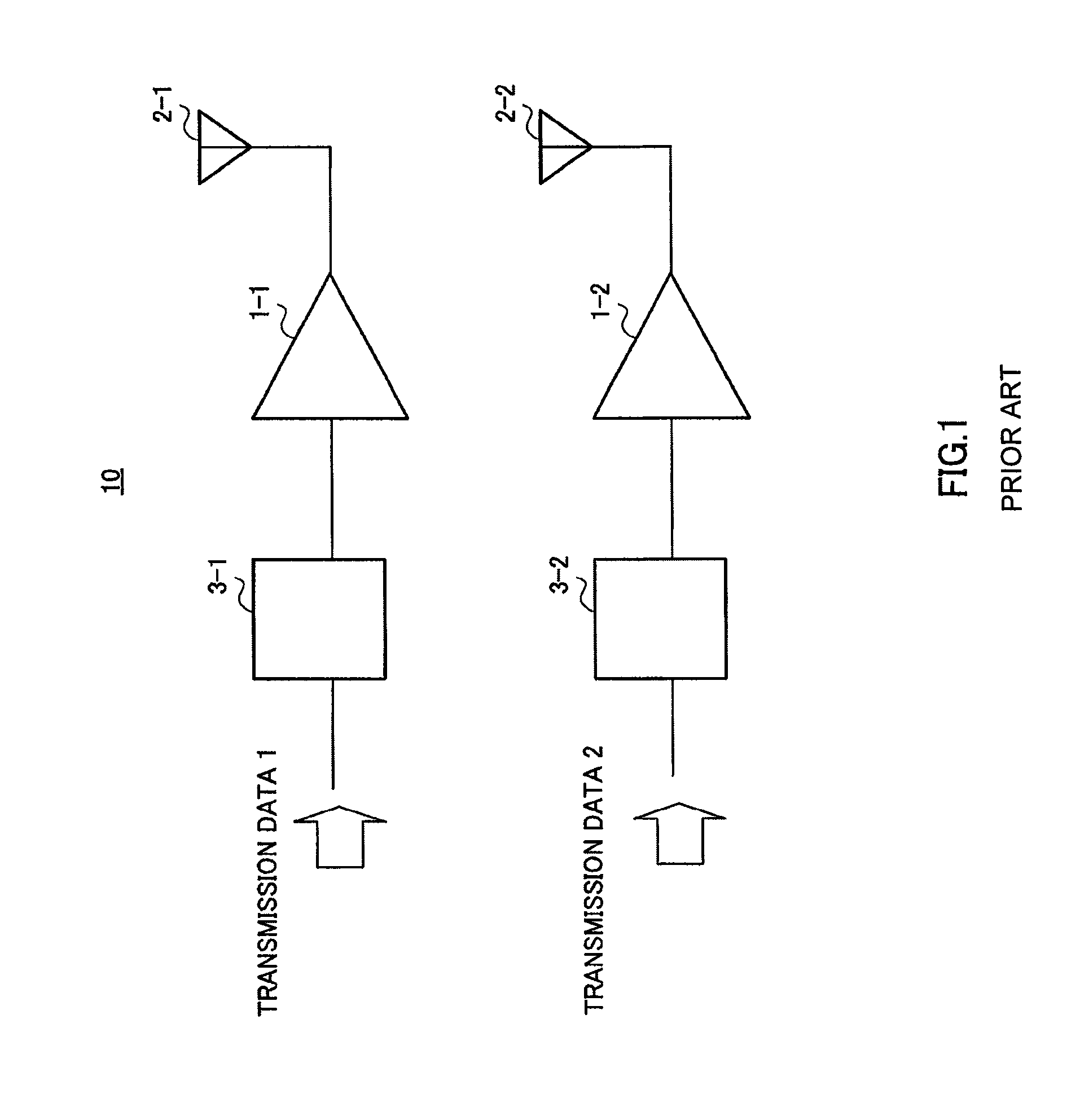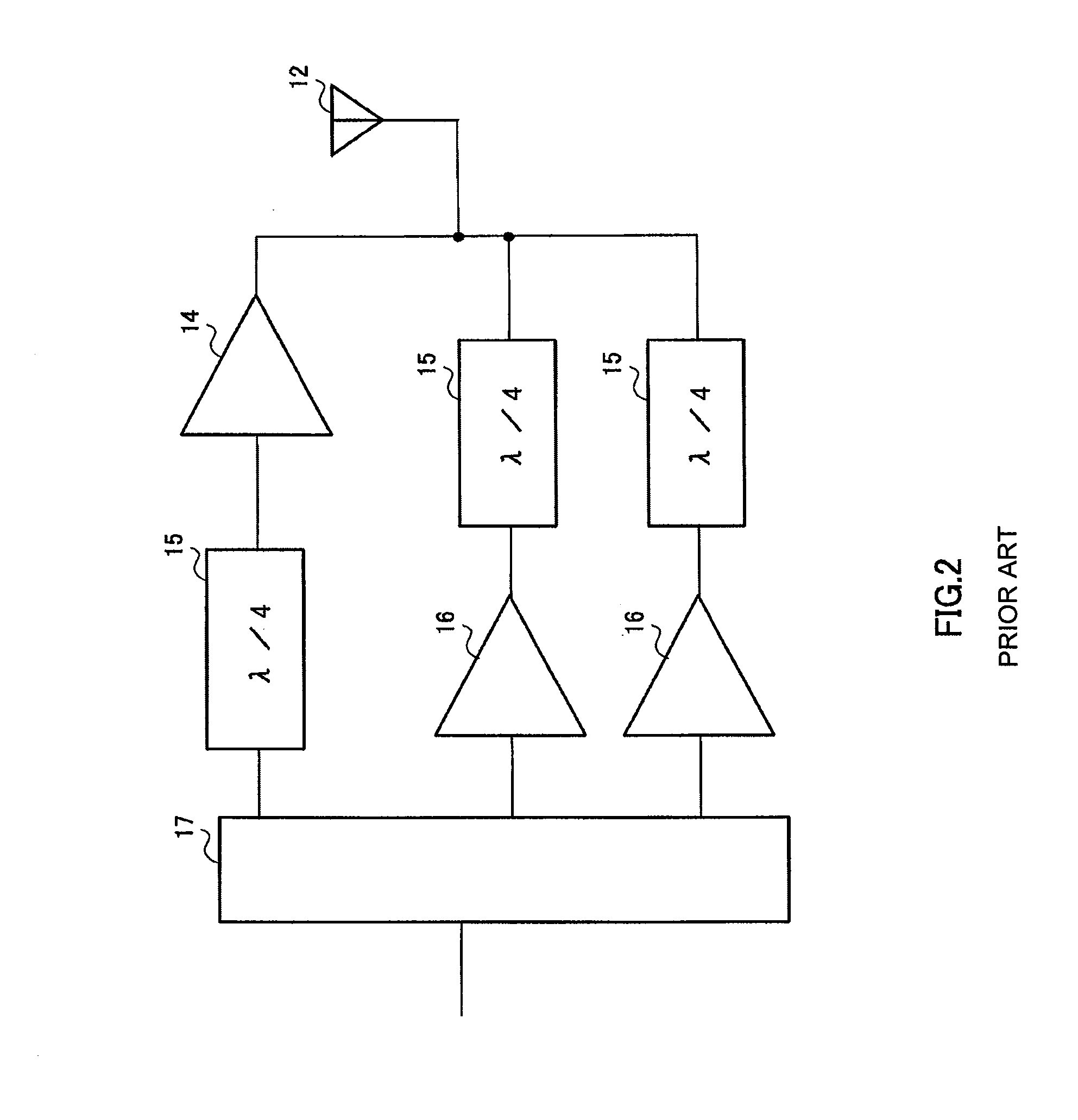MIMO transmitter
a technology of transmitting apparatus and microphone, which is applied in the direction of transmission monitoring, high-level techniques, and baseband system details, etc., can solve the problems of reducing the efficiency of the amplifier, the large-sized base station apparatus, and the short duration of the heat radiation of the mobile terminal's battery according to an increase in the power consumption of the power amplifier, so as to achieve high-efficiency power amplification
- Summary
- Abstract
- Description
- Claims
- Application Information
AI Technical Summary
Benefits of technology
Problems solved by technology
Method used
Image
Examples
embodiment 1
[0022]As shown in FIG. 3, MIMO transmitting apparatus 100 has radio signal generation sections 110 and 120, peak detection section 130, branch switching section 140, amplifiers 150 and 160, and antennas 170 and 180.
[0023]Radio signal generation section 110 receives transmission data sequence 1 as input, and performs modulation processing and radio processing (e.g. up-conversion) on transmission data sequence 1, to generate the first transmission sequence in a radio frequency.
[0024]Radio signal generation section 120 receives transmission data sequence 2 as input, and performs modulation processing and radio processing (e.g. up-conversion) on transmission data sequence 2, to generate a second transmission sequence in a radio frequency.
[0025]Peak detection section 130 detects the envelope of the first transmission sequence outputted from radio signal generation section 110. Further, peak detection section 130 detects peak values (maximum values) of the detected envelope. Peak detectio...
embodiment 2
[0054]As shown in FIG. 4, MIMO transmitting apparatus 200 has variable amplifier 210 provided on the input side of amplifier 150 and variable amplifier 220 provided on the input side of amplifier 160.
[0055]Variable amplifier 210 receives the comparison result from peak detection section 130 and switches the gain according to this comparison result.
[0056]To be more specific, variable amplifier 210 sets greater gain when the comparison result shows that the peak value is greater than the threshold value, than the gain when the comparison result shows that the peak value is equal to or less than the threshold value.
[0057]Variable amplifier 220 receives the comparison result from peak detection section 130 and switches the gain according to this comparison result. To be more specific, variable amplifier 220 sets greater gain when the comparison result shows that the peak value is greater than the threshold value, than the gain when the comparison result shows that the peak value is equa...
embodiment 3
[0061]As shown in FIG. 5, MIMO transmitting apparatus 300 according to the present embodiment has branch switching section 310. This branch switching section 310 has delay addition section 312.
[0062]Delay addition section 312 is arranged between division section 144 and combination section 146. Delay addition section 312 gives a delay to part of the first transmission sequence divided in division section 144.
[0063]By adopting this configuration, the first transmission sequence transmitted via antenna 170 and the first transmission sequence transmitted via antenna 180 are transmitted with a relative phase difference. By this means, it is possible to reduce to lower received level of the first transmission sequence on the receiving side, due to mutual interfering between the first transmission sequence transmitted via antenna 170 and the first transmission sequence transmitted via antenna 180 on the channel path.
[0064]Duration of delay with which the first transmission sequence transm...
PUM
 Login to View More
Login to View More Abstract
Description
Claims
Application Information
 Login to View More
Login to View More - R&D
- Intellectual Property
- Life Sciences
- Materials
- Tech Scout
- Unparalleled Data Quality
- Higher Quality Content
- 60% Fewer Hallucinations
Browse by: Latest US Patents, China's latest patents, Technical Efficacy Thesaurus, Application Domain, Technology Topic, Popular Technical Reports.
© 2025 PatSnap. All rights reserved.Legal|Privacy policy|Modern Slavery Act Transparency Statement|Sitemap|About US| Contact US: help@patsnap.com



